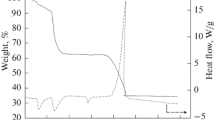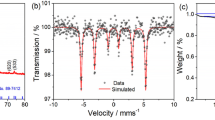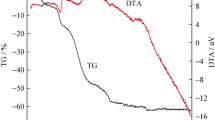Abstract
Carbon-coated olivine-structured LiFePO4/C composites are synthesized via an efficient and low-cost carbothermal reduction method using Fe2O3 as iron source at a relative low temperature (600 °C). The effects of two kinds of carbon sources, inorganic (acetylene black) and organic (sucrose), on the structures, morphologies, and lithium storage properties of LiFePO4/C are evaluated in details. The particle size and distribution of the carbon-coated LiFePO4 from sucrose (LiFePO4/SUC) are more uniform than that obtained from acetylene black (LiFePO4/AB). Moreover, the LiFePO4/SUC nanocomposite shows superior electrochemical properties such as high discharge capacity of 156 mAh g−1 at 0.1 C, excellent cyclic stability, and rate capability (78 mAh g−1 at 20 C), as compared to LiFePO4/AB. Cyclic voltammetric test discloses that the Li-ion diffusion, the reversibility of lithium extraction/insertion, and electrical conductivity are significantly improved in LiFePO4/SUC composite. It is believed that olivine-structured LiFePO4 decorated with carbon from organic carbon source (sucrose) using Fe2O3 is a promising cathode for high-power lithium-ion batteries.











Similar content being viewed by others
References
Palacin MR (2009) Recent advances in rechargeable battery materials: a chemist’s perspective. Chem Soc Rev 38:2565–2575
Dunn B, Kamath H, Tarascon JM (2011) Electrical energy storage for the grid: a battery of choices. Science 1334:928–935
Padhi AK, Nanjundaswamy KS, Goodenough JB (1997) Phospho-olivines as positive-electrode materials for rechargeable lithium batteries. J Electrochem Soc 144:1188–1194
Padhi AK, Nanjundaswamy KS, Masquelier C, Okada S, Goodenough JB (1997) Effect of structure on the Fe3+/Fe2+ redox couple in iron phosphates. J Electrochem Soc 144:1609–1613
Damen L, Hassoun J, Mastragostino M, Scrosati B (2010) Solid-state, rechargeable Li/LiFePO4 polymer battery for electric vehicle application. J Power Source 195:6902–6904
Sun CS, Zhou Z, Xu ZG, Wang DG, Wei JP, Bian XK, Yan J (2009) Improved high-rate charge/discharge performances of LiFePO4/C via V-doping. J Power Sources 193:841–845
Mathew V, Alfaruqi MH, Gim J, Song J, Kim S, Ahn D, Kim J (2014) Morphology-controlled LiFePO4 cathodes by a simple polyol reaction for Li-ion batteries. Mater Charact 89:93–101
Wang YG, Wang Y, Hosono E, Wang KX, Zhou HS (2008) The design of a LiFePO4/carbon nanocomposite with a core-shell structure and its synthesis by an in situ polymerization restriction method. Angew Chem Int Ed 47:7461–7465
Wu XL, Jiang LY, Cao FF, Guo YG, Wan LJ (2009) LiFePO4 nanoparticles embedded in a nanoporous carbon matrix: superior cathode material for electrochemical energy-storage devices. Adv Mater 21:2710–2714
Sun CS, Zhang Y, Zhang XJ, Zhou Z (2010) Structural and electrochemical properties of Cl-doped LiFePO4/C. J Power Sources 195:3680–3683
Gao PZ, Wang L, Li DY, Yan B, Gong WW (2014) Electrochemical performance of LiFePO4@C composites with biomorphic porous carbon loading and nano-core-shell structure. Ceram Int 40:13009–13017
Gim J, Song J, Nguyen D, Alfaruqi MH, Kim S, Kang J, Rai AK, Mathew V, Kim J (2014) A two-step solid state synthesis of LiFePO4/C cathode with varying carbon contents for Li-ion batteries. Ceram Int 40:1561–1567
Li J, Daniel C, Wood D (2011) Materials processing for lithium-ion batteries. J Power Sources 196:2452–2460
Li JL, Armstrong BL, Kiggans J, Daniel C, Wood DL (2012) Optimization of LiFePO4 nanoparticle suspensions with polyethyleneimine for aqueous rrocessing. Langmuir 28:3783–3790
Orlenius J, Lyckfeldt O, Kasvayee KA, Johander P (2012) Water based processing of LiFePO4/C cathode material for Li-ion batteries utilizing freeze granulation. J Power Sources 213:119–127
Zhang J, Xie J, Wu C, Cao G, Zhao X (2011) In-situ one-pot preparation of LiFePO4/carbon-nanofibers composites and their electrochemical performance. J Mater Sci Technol 27:1001–1005
Huang Y, Ren H, Peng Z, Zhou Y (2009) Synthesis of LiFePO4/carbon composite from nano-FePO4 by a novel stearic acid assisted rheological phase method. Electrochim Acta 55:311–315
Zhong M, Zhou Z (2010) Preparation of high tap-density LiFePO4/C composite cathode materials by carbothermal reduction method using two kinds of Fe3+ precursors. Mater Chem Phys 119:428–431
Wang J, Shao ZB, Ru HQ (2014) Influence of carbon sources on LiFePO4/C composites synthesized by the high-temperature high-energy ball milling method. Ceram Int 40:6979–6985
Liu H, Wang Z, Li X, Guo H, Peng W, Zhang Y, Hu Q (2008) Synthesis and electrochemical properties of olivine LiFePO4 prepared by a carbothermal reduction method. J Power Sources 184:469–472
Cheng L, Liang G, Khakani SE, MacNeil DD (2013) Low cost synthesis of LiFePO4/C cathode materials with Fe2O3. J Power Sources 242:656–661
Yu L, Liu Q, Wang H (2009) Synthesis of LiFePO4-C cathode materials using a green and low-cost method. Ionics 15:689–692
Liu AF, Hu ZH, Wen ZB, Lei L, An J (2010) LiFePO4/C with high capacity synthesized by carbothermal reduction method. Ionics 16:311–316
Liu H, Tang D (2008) The low cost synthesis of nanoparticles LiFePO4/C composite for lithium rechargeable batteries. Solid State Ionics 179:1897–1901
Li HH, Jin J, Wei JP, Zhou Z, Yan J (2009) Fast synthesis of core-shell LiCoPO4/C nanocomposite via microwave heating and its electrochemical Li intercalation performances. Electrochem Commun 11:95–98
Xu G, Li F, Tao Z, Wei X, Liu Y, Li X, Ren Z, Shen G, Han G (2014) Monodispersed LiFePO4@C core-shell nanostructures for a high power Li-ion battery cathode. J Power Sources 246:696–702
Dedryvère R, Maccario M, Croguennec L, Le Cras F, Delmas C, Gonbeau D (2008) X-ray photoelectron spectroscopy investigations of carbon-coated LixFePO4 materials. Chem Mater 20:7164–7170
Liu H, Fu LJ, Zhang HP, Gao J, Li C, Wu YP, Wu HQ (2006) Effects of carbon coatings on nanocomposite electrodes for lithium-ion batteries. Electrochem Solid-State Lett 9:A529–A533
Bard AJ, Faulkner LR (2001) Electrochemical methods: fundamentals and applications, 2nd edn. Wiley, New York
Ni JF, Zhou HH, Chen JT, Zhang XX (2005) LiFePO4 doped with ions prepared by co-precipitation method. Mater Lett 59:2361–2365
Yang H, Wu XL, Cao MH, Guo YG (2009) Solvothermal synthesis of LiFePO4 hierarchically dumbbell-like microstructures by nanoplate self-assembly and their application as a cathode material in lithium-ion batteries. J Phys Chem C 113:3345–3351
Wang L, Liang GC, Ou XQ, Zhi XK, Zhang JP, Cui JY (2009) Effect of synthesis temperature on the properties of LiFePO4/C composites prepared by carbothermal reduction. J Power Sources 189:423–428
Chen J, Zhao N, Li GD, Guo FF, Wang XF, Jia TK, Zhao JW, Zhao YG, Wang XL, Wan L (2016) Superior performance of LiFePO4/C with porous structure synthesized by an in situ polymerization restriction method for lithium ion batteries. Mater Chem Phys 180:244–249
Gao J, Li JJ, He XM, Jiang CY, Wan CR (2011) Synthesis and electrochemical characteristics of LiFePO4/C cathode materials from different precursors. Int J Electrochem Sci 6:2818–2825
Xiao ZW, Hu GR (2014) A novel synthesis of LiFePO4/C from Fe2O3 without extra carbon or carbon-containing reductant. J Cent South Univ 21:2143–2149
Rong BH, Lu YW, Liu XW, Chen QL, Tang K, Yang HZ, Wu XY, Shen F, Chen YB, Tang YF, Chen YF (2014) Fabrication and characteristics of nano LiFePO4/C composites with high capacity and high rate using nano Fe2O3 as raw materials. Nano Energy 6:173–179
Acknowledgements
This work was supported by the NSFC (21501071), China Postdoctoral Science Foundation funded project (2014M561577, 2014M561572), the Technology Innovation Fund of Science and Technology Enterprises in Jiangsu Province (BC2014206), the Science and Technology Support Project in Jiangsu Province (BE2014008, BE2014008-2).
Author information
Authors and Affiliations
Corresponding authors
Rights and permissions
About this article
Cite this article
Wang, Y., Li, H., Chen, M. et al. Synthesis and electrochemical performance of LiFePO4/C cathode materials from Fe2O3 for high-power lithium-ion batteries. Ionics 23, 377–384 (2017). https://doi.org/10.1007/s11581-016-1910-z
Received:
Revised:
Accepted:
Published:
Issue Date:
DOI: https://doi.org/10.1007/s11581-016-1910-z




